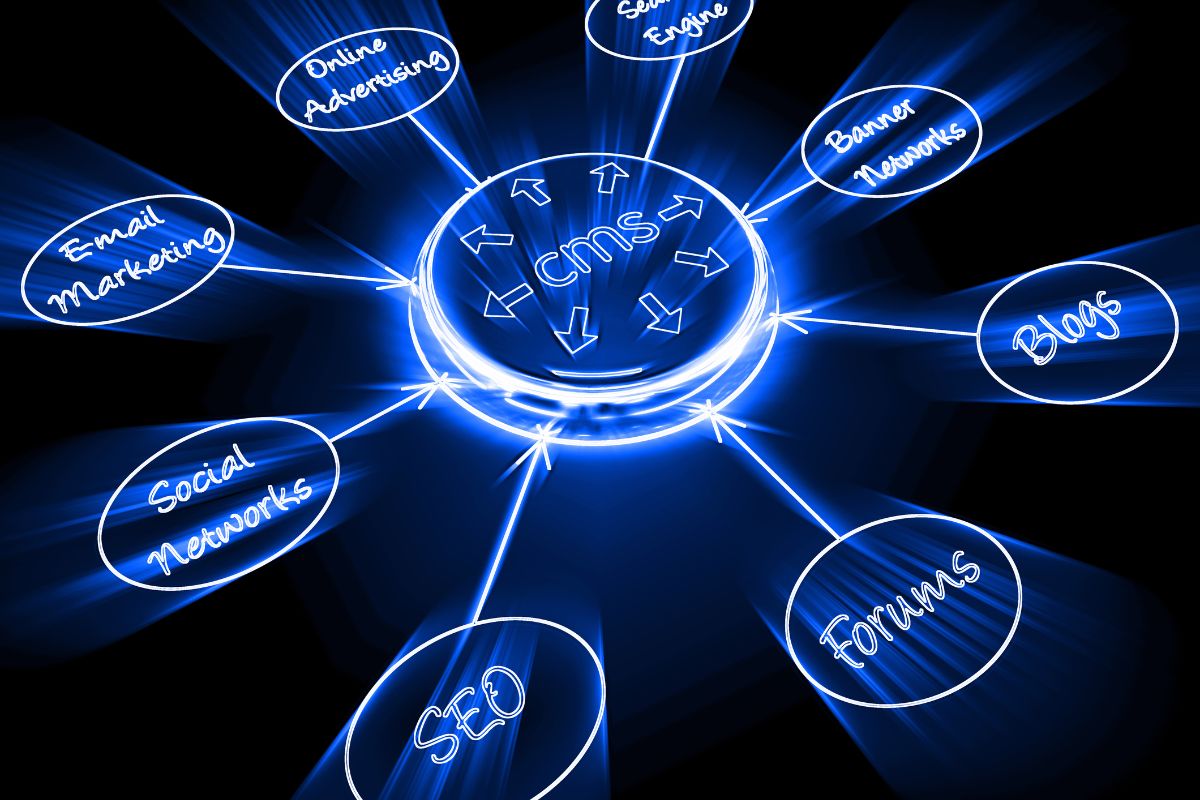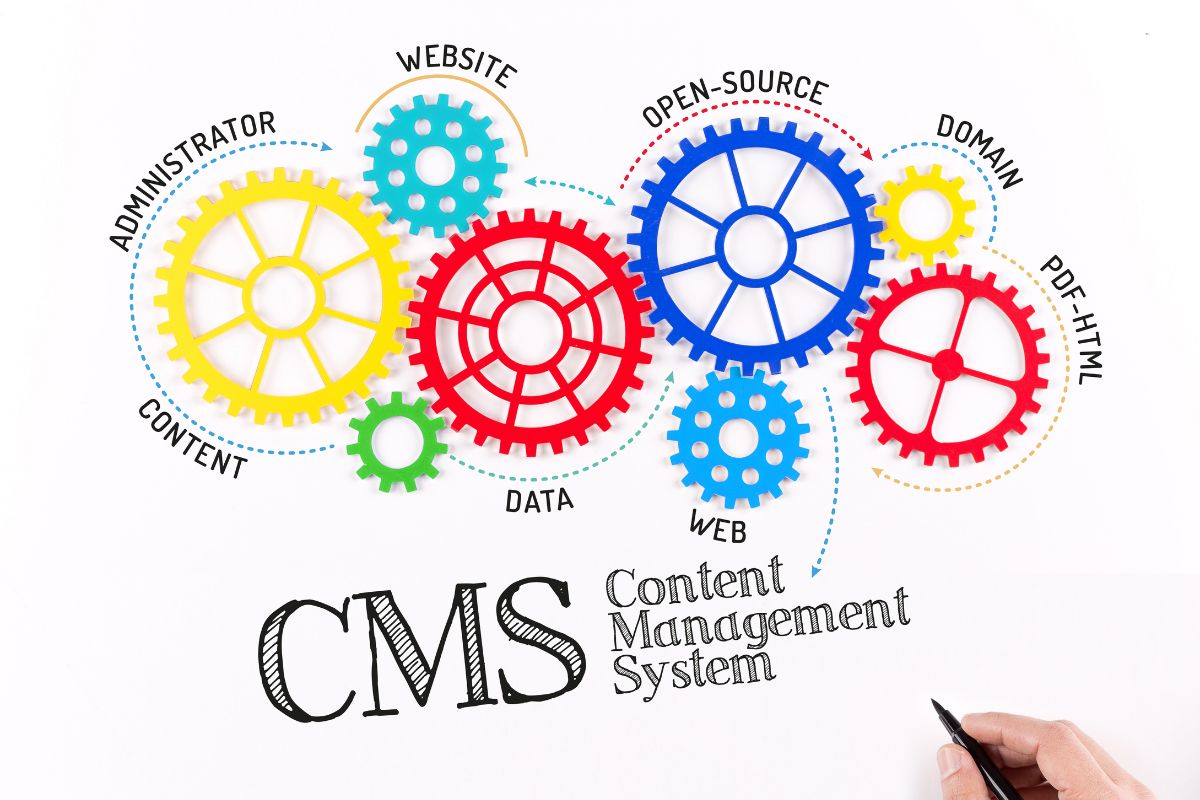Headless CMS is a content management system, used to control and ensure the functionality of web pages and the content therein.

But to learn more about what exactly a headless content management system does, it is important to understand what a CMS does, and how this differs from traditional management systems.
Content Management Systems: The Facts
When discussing content management systems, there are three particular systems that could be talked about: traditional, decoupled, and headless.
Traditional CMS
Traditional, or “monolithic” content management systems are the most commonly found style, and generally refer to the bundling of a system into one specific application.
This generally consists of a “front end” referring to the website’s design and it’s content, and a “back end”, which is the interface that is used to create the content in the first place.
Common examples of the traditional CMS method can be seen through websites such as Wix, WordPress, Squarespace, all of which generally require a specific language and framework, tying everything into one application.
Decoupled CMS
A decoupled content management system is where there is a back end generating the content, and separated front end.
Through this system, the content created can either be delivered through an API, or “application programming interface”, or through an integrated front end.
Through this system, the content created through the back end is always published somewhere, even if an API is not always used.
Headless CMS
Similar to a decoupled content management system, a headless CMS is where there is a content producing back end, but with no front end.
Within this system, headless CMSs have no connection to the front end, and have nothing to do with the publishing or design of the finished content.
This method is important in certain fields, and ensures a wide level of compatibility with content, focusing on specific, targeted criteria.
Headless CMS: The Goals

The criteria or goals of a headless content management system are composed of four main pillars: flexibility, performance, security, and cost.
Flexibility
Whilst headless CMS is not a new function within content management systems, it does introduce a new way of thinking about the way CMSs operate.
Every player in the wider architecture of a headless CMS operates independently of one another, relying on a separate API to act as a middleman and bring all of the other components together properly.
The benefit of this is that the same data can be transmitted across a number of different platforms and formats, without having to worry about catering it to the specifications of each system.
This means that any formatted device, any type of content, or any specific technology can receive the data and be ready to use in minutes, reducing time wastage and improving optimization.
Ultimately the goal is infinite, unlimited flexibility for all data created.
Performance
Another important pillar of a headless CMSs process is lightning fast performance.
The separate and flexible nature of a headless CMS means that information can be transferred quickly and in a straight line from point A to point B, without having to be re-routed, re-formatted, or otherwise delayed.
All components work independently of one another, and this means that API requests are minimized, the number of steps are reduced overall, and the whole process becomes much more simplified.
Due to the minimized number of tiers as compared to traditional content management systems, headless content management systems offer a centralized system that can serve the appropriate data to users, regardless of whether they are using a desktop computer, a mobile device, or a smart assistant.
As such, the time and effort that would otherwise have gone into developing the tiers for a traditional system are instead used to maintain the existing tiers of the headless system, making the whole process quicker, stronger, and less complicated.
Security
Of course, security is an important aspect to all aspects of computing, and headless content management systems are no exception.
The streamlined management style of a headless system means that not only does data get transferred quicker, but there are far less exposed entry points through which information can be tampered with, stolen, or observed.
When only certain parts of the system are activated, that means that malicious elements only have access to that limited component, meaning threats are much easier to manage and counteract.
As traditionally, the processes required a lot of behind the scenes mechanics for it to work, this unfortunately meant that several holes were left exposed in the system whilst the separate functions all worked together.
With a headless system, content creation and content delivery are always completely separated, which makes it almost impossible for malicious elements to access the back end and cause internal damage.
Cost
All of the above functions affect the overall cost that the system accrues, and make it much cheaper than traditional content management systems.
The separated nature of headless CMSs also means that you can make budget friendly choices when choosing individual pieces of software and components, allowing for even more cost saving down the line.
There is also a far more reduced need for individuals working on complicated and widespread formats, meaning that time, effort, and employee costs are cut with everyone working on the same project, optimizing it for any format, and reducing the need for time consuming and expensive retro fitting on past formats.
For example, turning a PC-formatted system into one suited for mobile devices like cell phones.
Final Thoughts
And there we have it, everything you need to know about headless content management systems, the differences with traditional CMS systems, and their useful place within content management.
Whereas content management was incredibly time consuming and expensive, namely due to the differing formats for content to be viewed on, headless systems are a great way to alleviate the stresses of a CMS, placing simplicity and ease above all else.
- The 20 Best Blogging Courses That Are For Beginners - December 7, 2022
- 20 Best WordPress Plugins For Blogs For Effective Blogging! - December 7, 2022
- 5 Excellent Affiliate Marketing Courses To Learn - December 6, 2022








